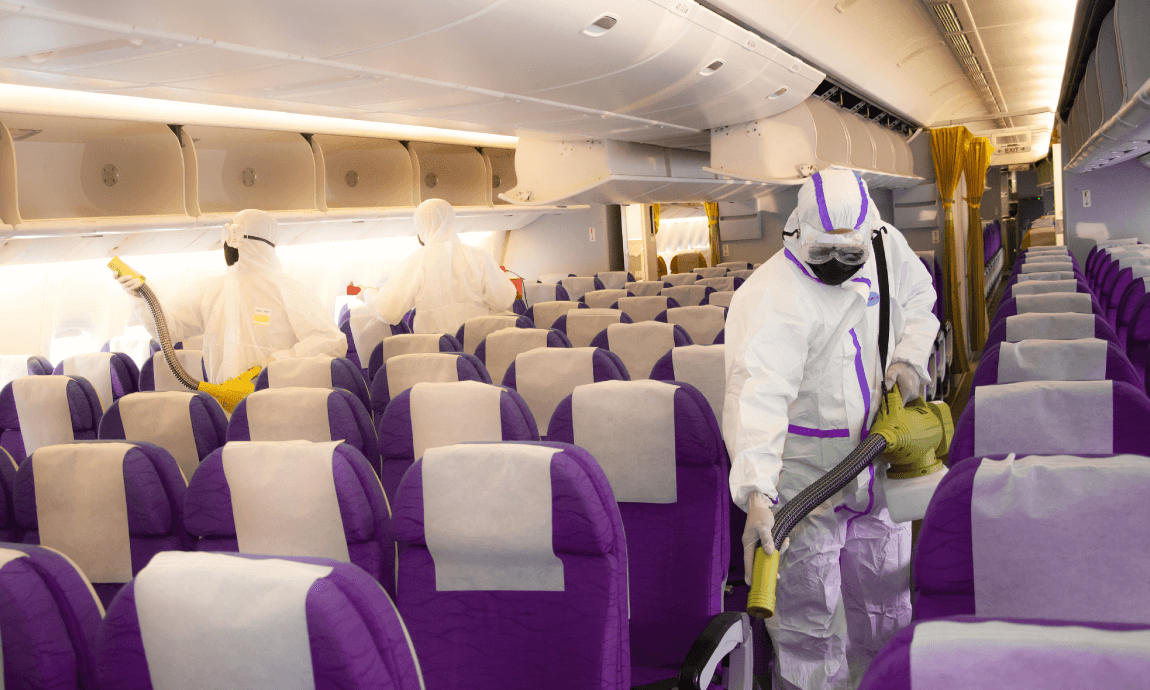Airlines in crisis: The impact of COVID-19 pandemic
Vrasidas Neofytou
Head of Investment Research

The unpresented hard landing in the global aviation industry demonstrates the significant impact and magnitude of the COVID-19 pandemic in the entire airline space. According to official travel data, more than 40 commercial airlines have already bankrupted or suspended their operations in 2020 so far, failing to survive the worst financial crisis in aviation history.
The next few months will be rocky for the airlines as coronavirus cases have risen in the U.S. and Europe at their highest level since summer. Many countries have already reinstated tougher social distancing rules and rolled back previews re-opening measures to curb the spread of the virus, creating a negative dynamic for the aviation industry once again.
Stock performance:
The shares of some major US carriers such as Delta Air Lines (DAL), United Airlines (UAL), and American Airlines (AAL) have lost more than 50% of their market value this year so far, contrasting with gains of 50% for the tech-related Nasdaq 100 Composite and 10% for the S&P 500 index.
Delta Air Lines and United Airlines delivered misses on third quarter-Q3 revenues that dropped at least 75% year-over-year, which was largely reliable with the drop in airport traffic observed during summer, low passenger revenues, and large operating costs.
Government support:
Governments around the world have minimized the damage in the aviation industry by supporting the carriers from going bankrupt during the first months of the pandemic. The industry’s revenues had been hit so hard from the pandemic-related lockdowns and the travel restrictions, that governments had no option but to support the carriers with billions of dollars to avoid layoffs.
The official authorities together have provided more than $150 billion in support, including direct aid, wage subsidies, corporate tax relief, and specific industry tax relief including fuel taxes. Thankfully for airlines, the financial aid does not add more debt to their balance sheets.
The US administration is planning to provide a new $25 billion bailout for U.S. passenger airlines to keep tens of thousands of workers on the job for another six months. The new financial aid will extend the prior $25 billion airline payroll support program of mostly cash grants approved by Congress in March, which it expired on Sept. 30.
American Airlines and United Airlines began laying off 32,000 workers at the end of September but had said they would change course if Congress reaches a deal on a new government program to fund payroll costs.
Furthermore, carriers have applied cost-cutting measures by parking thousands of aircrafts, canceling non-profitable routes, and laying off thousands of employees. Worth mentioning that many airlines were already struggling before the pandemic hit, but they now being in a better position because of government help.
Relaunch Boeing 737 Max flights in December:
Airlines are planning to return Boeing 737 MAX passenger jets back to service at the end of the year, provided they are certified by the U.S. Federal Aviation Administration.
At the beginning of October, the European regulators cleared 737 MAX’s return back to the skies, saying, safety changes Boeing made were satisfactory.
This is a very important development for the aviation industry after the two deadly 737 MAX crashes killing 346 people in a span of two years in Indonesia and Ethiopia. A congressional report pinned the blame for the fatalities on both Boeing and the FAA.
Outlook for next quarters:
Many analysts have downgraded the outlook for the airline’s stocks to negative as the short-term risk has increased due to the resurgence of covid-19 cases around the world together with the application of fresh lockdown measures and travel restrictions.
With demand recovery in most regions stalled and airlines still struggling with revenue generation and high cash burn rates, the market analysts expect to see more pressure in the final quarter of 2020 and the first quarter of 2021 at least. Carriers are expected to have Q4 2020 revenues only at 1/3 compared to Q4 2019, in response to the strict cleaning protocols, middle-seat blocking policy, and weak air travel demand.
The International Air Transport Association (IATA) expects that the passenger traffic is likely to return to pre-pandemic levels only in 2024, a year later than previously projected and some capacity may be lost for longer.
The year 2020 was a “lost year” for the airlines, and their focus is to minimize their operational costs, to apply budget-constraint measures which will improve their cash flow metrics until rebound will be reflected in air traffic following the distribution of an effective vaccine within 2021.
Important Information: This communication is marketing material. The views and opinions contained herein are those of the author(s) on this page, and may not necessarily represent views expressed or reflected in other Exclusive Capital communications, strategies or funds. This material is intended to be for information purposes only and is not intended as promotional material in any respect. The material is not intended as an offer or solicitation for the purchase or sale of any financial instrument.

